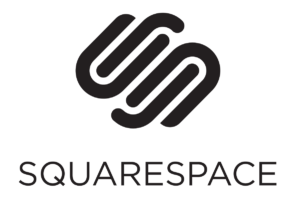When To Use Noindex Tags (And When To Avoid Them)
Webmasters frequently make mistakes with directive tags — HTML snippets that tell search engines how to crawl (and how not to crawl) a website. We draw attention to these issues when performing SEO audits and content audits, but the simple truth is that directives aren’t complicated, and we’d rather not spend our workdays worrying about them.
If you’re reading this blog, you’re in the same boat. We’ll skip past the basics and assume that you have some confusion about noindexing pages, and you’re concerned that you’ll make a mistake that costs you ranking position. Take a deep breath; search engines are fairly adept at figuring out webmaster intent, and even if you’ve made a serious mistake, fixing it is usually a fairly simple process.
Here’s how Google defines a noindex tag. We’ll warn you, it’s a pretty simple explanation:
noindex – Prevents the page from being indexed.
That was straightforward, right? The noindex tag sends a signal to the search engines telling them that you don’t want the page to appear in search. You might use this tag on category pages, duplicated pages, PPC landing pages, or other pages that you’d rather not see in search.
The bad news: Noindex tags don’t always work.
There’s a caveat, though, and it’s a big one. Google (and the other search engines) will sometimes ignore a noindex tag, indexing the page in question and showing it in search.
Why? We have no idea, but the folks at Google (and, again, the other search engines) leave a lot of room for webmaster error. Most website owners use tags improperly or inconsistently, so the search engines use directives as suggestions, not hard-and-fast rules.
We ran into this issue several years ago with a client’s store page, which another SEO firm had outfitted with noindex tags. The store was still showing up in search, but for specific reasons, the client didn’t want that — they didn’t want the store showing up until a customer actually clicked on the requisite link.
The solution was to block search engines from accessing the store via the htaccess file (if you’re dealing with something similar and you don’t immediately know what we mean, ask your web developer or drop us a line). We then used Google Webmaster Tools to request that the page be de-indexed.
The problem was resolved, but the client was lucky; Google alone decides whether or not to send traffic to a page. Once something is indexed, getting it scrubbed from the search rankings can be really difficult.
Ignored noindex tags can be frustrating and confusing.
The entire purpose of a search directive is to direct search. With that in mind, why would Google ignore a noindex tag? We can think of a few reasons:
- The page has a large number of internal links pointing to it.
- The page is linked frequently from external websites.
- The page was well-established in search before the noindex tag was added.
- Google was feeling naughty that day.
In all of these scenarios (well, except the last one), the search engine made the determination that the page was too important for the “noindex” tag to be legitimate; it must have been a mistake.
So, here’s the moral of the story: If you really, really don’t want a page to show up on search, the noindex tag isn’t enough. You’ll need to block the search spiders from accessing the page, then add the noindex tag, then make sure that your sitemap is up to date, then monitor regularly to make sure that the page doesn’t pop up.
If you don’t want a page to appear on search, but it’s not a life-or-death situation, go ahead and use noindex tags. As a general rule, though, webmasters should avoid using the noindex tag unless they have a good reason to use it. Let the search engine decide what should rank. They’ll figure it out.
Of course, most of our clients have the opposite problem — they want pages to appear on search, but they’re unable to raise their domain authority and capture that sweet, sweet organic traffic that they know is lurking out there. The solution to this problem is to perform keyword research and create an effective content strategy, ideally while addressing technical issues along the way. We can help with that, too.
Hopefully, this blog addressed your anxiety regarding noindex tags, but if not, contact ua via email at contact@relaycontent.com or fill out our online form for a quick, no-hassle quote.
How to Build a Content Plan with Sheer Guesswork
Here’s a story: When I started writing blogs for the industrial sector, I didn’t know much about OSHA. That was an issue, as OSHA is…well, kind of important in the industrial sector.
To prepare for my first few blogs, I did research. I asked questions that might seem obvious: What’s the difference between OSHA and NIOSH? What happens if you violate OSHA guidelines? Who’s responsible for a compliance violation? Is OSHA run by lizard people?
Surprisingly, the internet was oddly silent (except on the lizard people issue, which took me down a rabbit hole). Getting the answers to some of these basic questions took some digging, so I started writing blogs addressing those types of topics — the types of things that an industrial audience would almost certainly understand from the outset.
I pitched those articles to our clients, they accepted them, and those pages started ranking. Today, those first blogs are some of the most successful pieces we’ve written about the industrial sector, with several Featured Snippets and numerous top-10 SERPs.
Not bad for guesswork.
Building a Content Plan: Robot Eagles vs. Stupid Flying Beetles
You can pay a lot for content ideas. SEMRush doesn’t give you their Topic Research tools unless you upgrade to a premium account, to the tune of about $400 per month. Moz’s Keyword Explorer is an excellent alternative, but access costs at least $79 per month. MarketMuse uses AI to generate topics with strong growth potential; subscriptions start at around $400 a month and go up (and up) from there. You could make that investment.
Or you could go with your gut. That sounds terrible, I know. We digital marketers like to present ourselves as laser-focused birds of prey, spearing our goals with deadly accuracy from 10,000 feet in the air, and data-focused strategies certainly have their place.
But eagles aren’t the only animals that eat and lay eggs and generally do okay: So do June bugs.

A Relay content expert. Credit: Egor Kamelev at Pexels.
If you’ve ever watched one of these bumbling beetles try to regain its footing after flying into your curtains, you might not think of them as inspiring. But they get the work of being a June bug done, even if that means reproducing through accidental mid-air collisions. (I am sure this is how it happens and will not listen to entomologists who claim otherwise.)
June bugs succeed through the repeated effort of a first-timer, not by being the smartest bug in the room (that’d be spiders). They approach every task with the stumbling amateurishness of a three-month-old. And when I’m coming up with growth-focused topics for a content plan, and my SEO tools fail me? I try to think like a June bug. That is, I put my inner expert to sleep for a while.
Beginner’s Mind in a World of SEO Experts
Boosting traffic through organic search boils down to one process: providing the best possible answer to the questions most relevant to your industry. There’s no trick. There’s no shortcut. You just have to a: uncover the questions your audience is asking, and b: create the best answers to those questions on the internet.
If building an effective content plan starts with finding the right questions, a new writer’s perspective can be surprisingly useful in that effort.
Why? Because content writers don’t know as much about your industry as you do. They never will. They’re also tired, generally, and a a little bit incompetent. Not as incompetent as a June bug, maybe, but often in the running.
That’s also typically true of your audience. Even if you’re writing B2B pieces at a fairly advanced level, a good portion of your readers will want key terms clarified, and some of them will visit your site to try to shore up their knowledge of the industry. Addressing the easy stuff — even if it seems fairly obvious to you — can significantly widen your reach.
Using What You Don’t Know to Connect with Your Audience
I’m not saying “the power of big data” can’t help you build leads through targeted content. I’m not saying that ignorance is a virtue, even, but I am saying this: Listen to your ignorance.
If you’re curious about something in your industry, so’s someone else. If you can’t find an answer on the first page of Google, you’ve got a golden opportunity, SEO-wise — and those are rare. As you read industry literature, or conduct research, or talk to clients, take notes on everything you don’t know. Then search for answers.
Worst case scenario, you learn more about your industry. Even better? You find your next great content topic. Like a flailing June bug tripping into a tasty houseplant, your ignorance can lead you backward to your goal. If you don’t have enough ignorance, hire a writer who does.
I’m pretty sure I just claimed heavy ignorance as a value proposition, so it’s probably time to end this post. On the other hand…you found this page somehow.
Anyway, here’s a gif of a June bug on its back. Ha ha, keep trying, little buddy!
Turkeys Don’t Eat Cigarette Butts (And Why Google Isn’t Perfect Yet)
Recently, the Relay office spent an afternoon debating whether or not turkeys eat cigarette butts off the side of the road.
Don’t worry, it’s not as dumb as it sounds—it’s far dumber. Here’s the deal: Near St. Louis, you’ll often see wild turkeys walking along the side of the highway.
Around Thanksgiving, one of our partners suggested that the turkeys were looking for cigarette butts. He’d heard that turkeys get addicted to nicotine, so they frequent highways to feed their addiction.
I’d heard something similar from a friend of mine, but it didn’t seem too likely. We did a quick Google search to settle the issue, but we ran into a problem: Typing any combination of “turkey,” “nicotine,” “cigarette butts,” or “addiction” brought up hundreds of websites about quitting smoking cold turkey.
That’s useful info, but it wasn’t what we were looking for. We tried searching for scientific papers about birds and nicotine addiction, but didn’t find anything about turkeys specifically. Frustrated, we contacted the National Wild Turkey Foundation and received a quick response from biologist John Burk.

Credit: Alexas_Fotos / Pixabay
“I have been working as a Wildlife Biologist focused on wild turkeys for 30 years in 5 different states, and I can honestly say that I have never heard of this being a problem,” he wrote. “Turkeys have no sense of smell and therefore also no sense of taste.”
Burk went on to explain that turkeys have gizzards, and they walk on the side of the road to find small pieces of gravel that can help them digest their food. If a bird ate a cigarette butt by mistake, it would spit it out, since the experience wouldn’t be pleasant.
That would seem to settle the issue, but by this point, office alliances had formed, and the “turkeys are addicts” crowd wasn’t going to go down without a fight. For a second opinion, we reached out to the Illinois Department of Natural Resources, which put us in touch with another biologist.
After laughing at us for several minutes, he agreed with his contemporary.
“People have been dissecting turkeys for over 30 years,” he said. “We’ve never seen a cigarette butt. While I cannot say with certainty that a turkey has never eaten a cigarette, there certainly isn’t a significant population of nicotine-addicted turkeys out there.”
There you have it: Turkeys don’t eat cigarette butts, or if they do, they don’t do it on purpose.
What Turkeys Can Teach Us About SEO And Messaging
After trying in vain to get one of our clients to run a blog about turkeys and nicotine addiction, I realized that there is a tangible SEO lesson here: Google’s semantic search isn’t there yet.
Semantic search attempts to match a searcher’s intent with the results; if you search for “dog training tips” all afternoon and suddenly search for “pet food,” for instance, the search engine will likely present dog food as one of the top results (rather than, say, cat food, or turkey food).
For the most part, it works well, and semantic search is a crucial part of our strategy. We tell clients not to focus on individual keywords, since the semantic profile of a page—the page’s tendency to use related terms and synonyms that appeal to the searcher’s intent—is more important.
But search for “turkey” and “nicotine,” and you’ll inevitably get pages about “quitting cigarettes cold turkey.” Even if you perform a long-tail search (for instance, “Do turkeys in Illinois eat cigarette butts on the side of the highway because they are addicted to nicotine”), the semantic link between “turkey,” “cigarette,” and “human smoking” is too strong.
The lesson is to be careful when branding. Think about how keywords interact. Consider whether you’re using phrases that could be misinterpreted by semantic search—and when that’s the case, be ready to change your strategy. When in doubt, create as much content geared specifically towards your audience as possible.
Another crucial lesson: Don’t spend all afternoon arguing about turkeys, or you’ll have to write a blog about it to justify the lost productivity.
SEO TIP: Don’t Just Look At Your Landing Pages
“Why aren’t my landing pages ranking for certain keywords?”
That’s probably the most common question in SEO, and it’s not always easy to answer. We usually respond by asking clients why they want to rank for a given term; are they sure that their audience is using that term? Will the people searching for that keyphrase end up making a purchase, speaking with a salesperson, or reading an article?
But for the purposes of this article, we’re going to assume that you’ve gone through all that. You know where you want to rank, you’ve chosen your keywords carefully, and you’re not getting results.
What’s wrong with your landing page? What do you need to tweak to build a successful approach to SEO?
For starters, you’re only looking at the landing pages.
That’s a problem.
Here’s why: Google looks at your entire website in order to establish its semantic profile (semantics are words similar to the keyphrase, or related to the keyphrase, but fundamentally different). The more you write about a certain topic, the more authoritative your website seems.
As an example, consider two websites with roughly equivalent landing pages. They’re shooting for the search keyword “dog food.” One site has a single page about dog food; the other has 100. Even though the landing pages are equivalent, why wouldn’t the search engine prioritize the site with more content? It offers more resources for readers; it likely has more relevant links, more related keywords (think “nutrition in dog food,” “low-calorie dog food,” “canine chow,” etc.) and a better overall experience for searchers.
You might have the perfect landing page, but if it’s the only page on your site that uses a certain keyphrase, it probably won’t rank. Why should it? A website with dozens of high-quality, relevant pages should always beat a website with a single relevant page.
Use that principle to guide your SEO plan.
Yes, your landing page needs to be perfect, but you’ll need to make sure that you’ve got other relevant pages to improve your site’s semantic profile.
Oh, and quality is crucial. You can’t just fill a bunch of pages with keywords; make them real resources that will help your audience get the information they need. Cover broad topics and niche topics. To go back to our dog food example, you might write blogs like:
- What To Know About Raw Diets for Dogs
- What Nutrition Do Dogs Need?
- Why Dogs Are Natural Omnivores
- Choosing A Food For A New Puppy
Don’t worry as much about fitting in keywords. Worry about making useful, functional articles. Ideally, you’ll write 400-600 words on each topic, but if you can get a few thousand words in without stretching, do it. As long as you’re providing quality content, you’re spending your time well.
SEO is a long process, and you’ll still have to pay plenty attention to your landing pages. Our point is simply that your landing page isn’t the only factor in your ranking for a certain keyword. Look at your entire site and consider whether you’re truly offering the best result—after all, that’s exactly what Google’s doing.
Should You Hide Blog Categories with Noindex Tags?
Recently, we had a few clients ask whether they should be putting a “noindex” or “nofollow” tag on their blog category, author, and tag pages. WordPress creates these pages to provide another avenue for site organization; they’re potentially useful to your users, and if you’re creating content on an ongoing basis, it’s usually a good idea to leave them in place.
But should those pages be crawlable? Won’t search engines see them as duplicate content, since they contain some of the same language as your blogs?
Plugins like Yoast give you an easy way to noindex these pages. In Yoast, the setting in question looks something like the image below.

Yoast giveth, and Yoast taketh away.
Simply click those “noindex” buttons, and you’ll, uh, noindex the pages. It’s not rocket science.
Of course, before you take that step, you’ll have to determine whether or not you actually want those pages to be noindexed. You certainly don’t want to nofollow them, since there’s no real benefit to doing that (and the nofollow tag shouldn’t be commonly used, anyway; that’s a subject for another blog).
Here are the questions you should ask before using the noindex tag anywhere.
Is this page useful to readers in a unique way, and does it have enough content? If so, Google will probably want the option to show it in search.
“But wait,” you say, “these pages aren’t useful, and I’m worried that they’re preventing me from achieving my keyword ranking goals.”
First of all, stop talking out loud at your computer. I’m not the NSA, and I can’t hear you through the monitor (usually). Second, you’re probably not cannibalizing your own search ranking, because that’s really hard to do.
Here’s why: If you’ve got two pages that are great responses for a given query, search engines will simply show both. They’re generally not going to interpret your tag or category page as duplicate content, since hundreds of thousands of WordPress websites use those page types for organization; Google absolutely understands why they’re there and what they do. Google is smart. Google is wise. All praise Google.
Search for FiveThirtyEight’s reportage on Jon Ossoff, for instance, and the tag page comes up first, followed by FiveThirtyEight’s articles on the Congressional challenger. Google interpreted the tag page just fine, and determined that it was the best response to my query.
And you know what? Google got it right. That page provided a better resource than any of the individual blogs.
I should note that my approach here is atypical; many SEOs insist on noindexing tag pages by default. In fairness, there are some instances in which you’d want a blog tag, category, or author page to stop showing up in search.
- If your site is new or extremely small, the blog tag pages will likely be very low quality. They may list a single blog, and if that’s the case, the blog would surely be a better query response.
- You also might not use blog tags. In this case, I’d disable the tags entirely, but noindexing the pages is still an option, I guess, if you’re lazy. Are you lazy? Don’t be lazy.
- You might have a single author, in which case the “author” pages are redundant. In that case, again, I’d just remove the actual author pages—why trust a noindex tag when you can scrub your site of redundancy?
I would noindex these types of pages in one situation: If I had a small site that was adding content slowly, and I believed that the tag/category/author pages would be useful at a later date. That situation is extremely common; if you’re just now starting a blog, for instance, this is the approach to take. In fact, we noindex our tag/category/author pages for this very reason.
Also, I don’t post as often as I should, since I’m usually busy writing stuff for clients, and our category pages are pretty bad as a result. The shoemaker’s children have no shoes.
But what about the dreaded duplicate content penalty?
Well, these organizational pages aren’t really duplicate content—they serve a unique purpose. And the whole “duplicate content penalty” might be scary, but it’s usually not a major concern if you’re not plagiarizing.
In most cases, if Google sees similar content on two pages, it’ll simply choose one of the pages to rank—it won’t ban your domain or anything like that. You’re not getting a manual penalty unless you’ve been doing some shady stuff.
The bottom line is that tag/category/author pages are absolutely fine on larger sites. On growing sites, the noindex tag is fine, but realize that it’s just a suggestion (and Google frequently ignores that suggestion if it thinks you’re mistaken). And before using any SEO directive, make sure that you’re not missing a cleaner solution.
Oh, and if you vehemently disagree with this post, we’d love to hear why. Post a comment below and I’ll respond (and call you names behind your back).
Can You Build An SEO-Friendly Site with Squarespace?
Squarespace is a rapidly growing web platform, promoted heavily through podcasts, banner ads, and even a TV spot during the Super Bowl. Unlike WordPress, it’s not free; personal sites are available for $18/month, while business accounts are available for $26/month.
So, can you build a ranking website for that money? Squarespace proudly proclaims that all of its sites are automatically SEO optimized, with powerful analytics and fully integrated e-commerce tools.
We decided to look at Squarespace’s SEO features in detail. In the end, we believe that it’s ideal for small businesses, but not quite as powerful or versatile as WordPress. Let’s dig in a little deeper.
Basic SEO Features – To optimize your content, you’ll need to start with optimized title tags and meta description tags. Squarespace provides resources for inputting these tags on a page-by-page or full-site basis. You can find instructions for inputting a page title and meta description in your Squarespace theme by visiting the platform’s support page here.
One issue with Squarespace is that, by default, it uses H1 tags throughout standard pages for page headlines. As a result, many pages have multiple H1 tags, which is typically thought of as bad practice.However, the company claims that this isn’t an issue, since HTML5 introduces new tags for page structure.
In our view, it’s not an ideal practice, and there isn’t much justification for preventing users from controlling their H1/H2 tags. Still, Squarespace is correct in saying that header tags aren’t a major ranking factor, and we doubt that Squarespace sites are meaningfully penalized. It appears that Squarespace is prioritizing simplicity over versatility, and there’s nothing inherently wrong with that.
Analytics – Website analytics play a huge role in any well-constructed SEO plan, and Squarespace sites automatically have access to the platform’s proprietary analytics tool. This is not the same as Google Analytics, and you’ll likely get different numbers from each tool, especially when looking at search engine queries.
Google Analytics is absolutely more powerful than Squarespace Analytics, but you can use both tools on the same site. The Squarespace tool is perfectly fine for businesses that aren’t looking for complex usage data, but as your site grows, you’ll probably want to become adept at creating filters in Google Analytics, as the service provides much more detailed information.
E-Commerce – For many businesses, Squarespace’s 2 percent sales transaction fee (3 percent for personal sites) will be a dealbreaker. If you can get past that, you’ve got decent control over the items in your e-commerce store, although you don’t have as much versatility as you might get with Magento or even WooCommerce.
Ultimately, we think that Squarespace’s SEO features work exactly as intended. Other than header tag manipulation, we couldn’t think of a single common SEO task that we couldn’t figure out through Squarespace, especially given the presence of their “code injection” tools.
There aren’t a ton of advanced features right out of the box, but unless you’re willing to really dig into SEO, advanced features can do more harm than good. While Squarespace takes a somewhat minimal approach to search engine optimization, that’s perfectly fine for 95 percent of websites—and if you’re in the upper echelon of sites, we’re sure that you can handle more auspicious SEO projects with a quick call to Squarespace support.
There’s no reason that you can’t build a ranking website on Squarespace, and because the platform updates automatically, it’s a perfectly acceptable option for small businesses, bloggers, and anyone who doesn’t want to mess around with WordPress installations. Just make sure you fill your new site with plenty of fresh, high-quality content (or better yet, hire us to do it).
How Long Should My SEO Content Be?
If you run a website and you’ve found your way to this page, you probably understand the importance of unique content. Websites that copy all of their content won’t rank very high on Google search results (in most cases, anyways).
However, if you’re sitting down to write something new for your site, there’s a big difference between a 200-word blog entry and 1,600 webpage. Is there a substantial benefit to longer-form content — in other words, how long does an article need to be in order to rank well on the major search engines?
The answer is pretty unsatisfying: it depends on the purpose of the page. I’ve seen some great websites with only 150-200 words of written content, and I’ve seen 2,000 word behemoths that can’t manage to get a message across.
With that being said, you want a more complete answer, don’t you?
My typical recommendation for blogs, articles and other long-form content is 600-800 words. However, website pages can be significantly shorter for well-established businesses. 300 words of quality content is much more valuable for search engine optimization than 10,000 words of rambling incoherence.
SEO Content Should Be Functional and Useful.
Consider the following when setting a word count goal: how much information do you have for your reader, and is all of that information relevant to the subject of the piece?
Google wants to prioritize content that answers the user’s query — the text that they enter into the search engine to generate a list of results — so ideally, your content should be geared towards a certain query.
This means that you can sometimes strengthen your article by narrowing your focus. If you’re creating a page about changing the strings on a guitar, you wouldn’t want to talk about guitar amplifiers, pedals, or tuners unless you could relate those topics directly to the string changing process.
The more relevant content, the better, but you won’t win any writing awards (or high search engine rankings) by packing in a ton of useless information. Visitors will leave your page quickly, and Google will take notice. Long content can be bad content.
If you’re thinking about a new piece of content, try performing a few searches on Google or Bing. Look at the top links, then try to think of ways to make content that will be better than the top links. Think about what the average user might want — the current top-ranking page might leave out some important information, or it might gloss over technical terms that require explanation. You might also be able to add pictures, videos, web tools and other components that extend the functionality of the target page.
Content length is certainly important, but it’s not an especially effective means of evaluating a website. Use the 600-800 word threshold as a guideline, but always prioritize the users over search engine robots.
Q&A: For SEO, Should I Upload a Bunch of Content All At Once?
Q: If you’ve got a bunch of content to upload to your site, should you upload it one piece at a time or put it all up at once?
A: I received this question recently from a very active client. I told them to go ahead and upload everything, but I might not give the same advice to every site owner.
Here’s the thing: Google certainly doesn’t want to penalize you for uploading a bunch of great content. Your articles aren’t doing you any good while they’re tucked away in a folder on your desktop. You should certainly get them out as quickly as possible.
However, there’s an exception, and it’s an important one. If you don’t typically add new content — if your site is pretty much static other than the occasional update — you may benefit slightly from uploading a piece at a time. Fresh content is usually a good thing, and a site that keeps making good content will generally do better than a static site.
Therefore, if you don’t think you can afford a content creation service (cough, cough) and you don’t have the time or skills to write new content on your own, you may benefit from slowly working through that big backlog.
On the other hand, if you’re already creating fresh content on a weekly basis, go ahead and put all of that stuff up there. Just make sure that it’s all ready for prime time. With each piece of content, you should:
- Check the title and header tags. Make sure they’re optimized and that they reasonably address a search query. Use relevant key phrases, but don’t stuff your content with keywords to try to get a higher ranking. That never works, or this website would be nothing but the word “SEO” and I wouldn’t have a job.
- Check the meta description. Yeah, yeah, Google doesn’t use the meta description in rankings, but it still shows it to potential visitors. Write a compelling meta description that will draw people in.
- Use relevant images. Make sure that the images are properly tagged.
- Promote your content. Even if you’re just releasing a bunch of technical documents, find a way to drive some temporary traffic. Make a press release or a blog post announcing your content.
So, to reiterate: there’s certainly no penalty for putting a bunch of stuff up at once. However, regardless of your release strategy, make sure that your content is properly optimized.
Your Customers Have a Query. Is Your Site the Best Answer?
I hear a lot of my SEO consulting clients ask a simple — but misguided — question:
Why aren’t we ranking for our target keyword?
I hate to answer a question with a question; it reminds me of when I went to a Buddhist Zen center, and every question was answered as vaguely as was possible (yes, yes, I get the non-duality of all existence, but would you just tell me where the bathroom is?). I know that it can be a frustrating way to start a conversation.
However, I’m not doing my job if I don’t point out the error in the question — instead of asking why you aren’t ranking, you should ask why the current top result is ranking. The answer is always the same; it’s currently the best answer.
Re-Think What You Know About Search Queries
Let’s talk about search queries for a second.
A query is just that — a question — and it’s what web users type to find answers. In fact, some early search engines would actually force their users to use the form of a question (I’m looking at you, Ask Jeeves).
Most business owners think of queries as magical keys for more business, but I find that you’ll get better results (very quickly, in many cases) by simply thinking of every search as a question. Now ask: are you the best answer for that question?
Let’s work with a concrete example, because I’m getting a little too Zen for my own liking (no offense to the Zen Buddhists, but I doubt they took offense in the first place). Say that you own a car detailing shop in Ohio. With a few exceptions, all of your customers are in Akron. All of your customer reviews are from around Akron.
You might want to rank nationally for the key phrase, “car detailing,” but that’s simply not happening. People who type those words into Google are looking for car detailing services near them, or they’re looking for general information. In any case, you’re not the right answer to that question.
Now, you probably already know that, but you might not realize that you might not be the best answer for “car detailing in Tallmadge,” which, for non-Ohioans, is a city near Akron. There are probably plenty of detailing shops in Tallmadge proper, so Google doesn’t want to lose credibility by sending users all the way to Akron for their detail work. There’s a good chance that you’re only a good answer for “car detailing in Akron,” at least until you do some more work.
Adapting Your Site to the Search Query
So, is your little car detailing shop out of luck?
Of course not. Maybe you’re the best detailers around, and maybe you’re the only shop qualified to handle vintage Ford trucks. Maybe you’re opening a new office in Tallmadge.
You need a dedicated page that’s set up to get the “car detailing in Tallmadge” keyphrase, but if you want to get to the top of the search results and stay there, you can’t just spam the keyword. Write real content about your shop — tell visitors why they should make the trip from Tallmadge to Akron, let them know about your specialties, talk about the experience of your staff.
Your website is a sales pitch, after all, and it’s a sales pitch to your customers — not to Google. If you provide real information (and you don’t just try to copy your Akron site while replacing a few words), you can rise through the ranks pretty quickly. In niche markets and small cities, the process is remarkably easy as long as you don’t attempt to game the system.
If you haven’t noticed a pattern yet, most of these blog posts will boil down to “make quality content,” but you also need to think about your audience — and the questions they’re asking — in order to see a return. In the next few blogs, I’ll provide a few tips for content creation and keyword research. And yes, we’ll get into Google Keyword Planner and Webmaster Tools and all of that stuff, but for now, focus on asking the right questions. Unless you’re a Buddhist monk; then you’ve probably already figured this stuff out.
And by the way, I apologize if you found this blog post by searching for “car detailing shop in Ohio.” We, uh, don’t do that here.
Do Small Local Businesses Need SEO-Friendly Content?
Content is king, but sometimes it’s temporarily overthrown — changes in Google’s search algorithm can temporarily topple even the most meticulously curated content. In recent years, we’ve seen this happen time and time again as the search engine puts more focus on local results.
You’ve probably seen this for yourself — search for “plumbing,” “carpentry” or any other general keyphrase with a local slant, and you’ll see sites from businesses near your physical location. What’s more interesting is the quality of their content; you’ll often find pages that rely on outdated SEO techniques (such as putting keywords in bold or mindless repetition of long-tail phrases) instead of quality content.
What gives?
To put it succinctly, that awful website is the most optimized option near you. While the content may be mediocre, the landing page delivers exactly what customers want — plumbing, carpentry or other “call us now” services — and as a result, people stay interested after clicking through. Remember, Google pays close attention to how long users stay on a page.
The “Fresh Canvas” Theory of Local SEO
Google emphasizes geo-specific local results where it makes sense, and that’s led some small businesses to reconsider their SEO marketing strategies. Is there really a reason to buy high-quality content or to look at stuff like header and canon tags if the competition’s using decade-old SEO techniques to get to the top?
Sorry for the dumb answer, but yes, it’s absolutely still worth it. Your competitor’s site is currently on top because it gives users what they expect. Give them a better experience, and you’ll slowly but surely climb the ranks.
Content may be king, but it’s also cheap. Outfitting a small business website with high-quality content should never cost more than a few hundred dollars, and operating a blog shouldn’t take more than 20-30 minutes per week (you can also hire content creators to maintain your blog for you, further reducing your costs).
Compare that to the costs of advertising versus organic search results; if you use a lot of pay-per-click ads, a high geo-specific ranking on Google will easily save you thousands of dollars per month, and you’ll enjoy more benefits over time as Google’s local algorithms improve.
In fact, I’d go so far as to say that right now, small local businesses can benefit from SEO more than other types of businesses — they’ve essentially got a fresh canvas to work with.
SEO content isn’t rocket science, and most small businesses can easily create a plan for long-term success; content is the most important part of that plan. Make sure you’re delivering high-quality content on a regular basis. Every piece should give a customer information or provide them with entertainment. Don’t focus on sales when creating your ongoing content. Content may be temporarily overthrown, but it always seems to find its way back to the kingdom.




